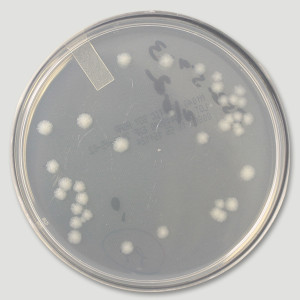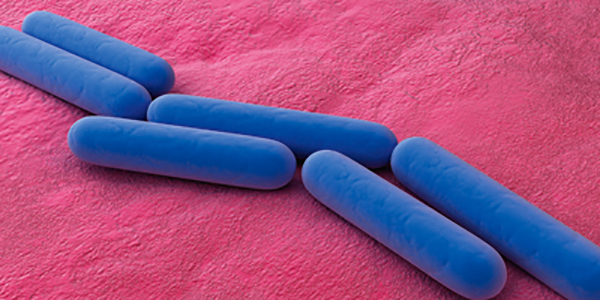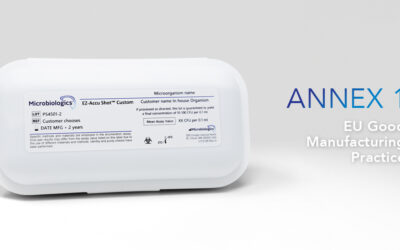If you have isolated Bacillus cereus in your pharmaceutical manufacturing environment, you are not alone! Bacillus is one of the most common microorganisms cited in U.S. Food and Drug Administration warning letters associated with contamination in pharmaceutical manufacturing. The top three causes of B. cereus contamination in pharmaceutical products are:
- Deficient cleaning and disinfection programs and/or failure to qualify the efficacy of sporicidal agents used for disinfection
- Insufficient material control relating to the cleanliness of materials entering controlled pharmaceutical environments
- Inadequate air handling systems
Description:
B. cereus is rod-shaped, Gram-positive, motile and endospore-forming.
Conditions for Growth:
B. cereus is facultatively anaerobic and grows optimally between 20° and 40°C. However, some psychrotolerant strains have been found to grow at 4°C. The spores, which can survive in inhospitable conditions, are resistant to heat, disinfectants, desiccation and radiation.
Colony Morphology:
Most strains grow well on nutrient, blood and tryptic soy agar. Colonies are circular to irregular, large (2 to 7 mm in diameter) and hemolytic on sheep blood agar.
 Habitat:
Habitat:
B. cereus is widespread throughout the world. The organism can be found in soil, fresh and marine waters, foods, milk, spices, feathers, leather, manure, plants, paper and sheep fleece.
Pathogenicity:
B. cereus can cause two types of food-borne illness: the emetic type causes nausea and vomiting 1 to 5 hours after ingestion, and the diarrheal type occurs 8 to 16 hours after ingestion. Endophthalmitis may follow eye trauma and can lead to blindness when left untreated. The species has been known to cause keratitis in contact lens wearers. B. cereus may cause serious infections such as septicemia and pneumonia in neonates, alcoholics, drug-users and immunosuppressed individuals.
Contamination Potential:
B. cereus may be introduced into a pharmaceutical production area through raw materials such as dry powders, cardboard, employees, clothing and dust. Spores can hide in cracked and damaged surfaces.
Family:
Bacillaceae. Genus: Bacillus. It is related to Bacillus anthracis the agent of anthrax in cattle and sheep. Other members of the genus include B. licheniformis and B. subtilis which have been implicated in a wide range of secondary or mixed infections in immunodeficient or otherwise immunocompromised hosts. Genus members, Bacillus circulans, B. coagulans, B. pumilus, B. sphaericus and B. thuringiensis, have caused occasional infections.
References:
Bacillus cereus, a Volatile Human Pathogen, Edward J. Bottone, Clin Microbiol Rev. 2010 Apr; 23(2): 382–398
Bergey’s Manual of Systematic Bacteriology, 2nd Edition, Volume Three, The Firmicutes. 2009
Manual of Clinical Microbiology, 10th Edition, ASM Press, 2011
The Risk of Bacillus cereus to Pharmaceutical Manufacturing, Tim Sandle, PhD, The American Pharmaceutical Review, 2014
US FDA Bad Bug Book, 2nd Edition, 2014, available online






Bacillus HU36®, being a spore, offers advantages of better colonization and survival through the digestive track when compared to non-spore probiotic organisms; it also offers claims related to the most bioavailable form of antioxidants and carotenoids.
More details:
“https://www.synergialifesciences.com/bacillus-indicus-strain-spore-probiotic-HU36.html
Other Bacillus Probiotics like SC208, SL307, SC109 are well known for its clinical efficacy in several human conditions.
More Details:
https://www.synergialifesciences.com/other-bacillus-probiotics.html
Bacillus HU36®, being a spore, offers advantages of better colonization and survival through the digestive track when compared to non-spore probiotic organisms; it also offers claims related to the most bioavailable form of antioxidants and carotenoids.
More details:
https://www.synergialifesciences.com/bacillus-indicus-strain-spore-probiotic-HU36.html